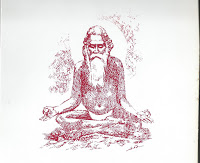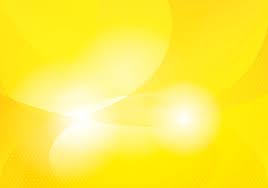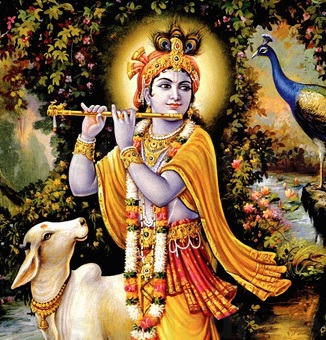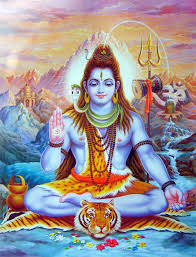
COMPOSER Achyutha Dasar |
|
|||||||||||||
|
Achyuta Dasar was born in Polur (which lies between Velore and Thiruvannamalai) in North Arcot district in 1850. His original name was Abbai. He was well versed in Telugu (his mother tongue), Tamil and Sanskrit and had acquired poetic skill in these languages. Along with this, he also cultivated his knowledge and expertise in music and became capable of composing songs in all the three languages. He has written spiritual books like sanmarga tarpananam and advaitarasa manjari. He was, for a while, a school teacher at Polur. During this early period of his life, Achyuta Dasar was, like Saint Thyagaraja, devoted to Lord Rama. He had built a temple where he held weekly bhajan-s where he sang some of his own compositions as well. It seems that his mellifluous singing voice would mesmerize even cattle grazing in the fields. Achyuta Dasar also wrote musical works, such as, 'Prahlada Charitram', 'Sakku Bai Charitram' and 'Dhruva Charitram'. He used to deliver upanyaasa-s and harikatha-s as well. Noticing his ardent devotion to Lord Vishnu, one Venkatakrishna Dasa, an elderly Vaishnavite, made him change his name from Abbai to Achyuta Dasar. Achyuta Dasar got married to Thayammai, but his innate spiritual tendency did not allow him to pursue married life for long and made him go in search for a guru to guide him in the spiritual path. In the beginning stage of his journey, he received training in yoga techniques under the tutelage of a woman teacher named Venkammai. He is said to have had such a mastery in yogic levitation that he could bodily lift himself six feet above the ground and float in mid-air. However, he later gave up his yoga practice apparently due an accident in this venture.
Thereafter, Achyuta Dasar continued his search for a guru who would teach him atma vicaaram (Self inquiry). His search led him to an ascetic, Nijanananda by name, who lived in Kadamur and taught him the advaita philosophy. He soon reached the advanced samadhi state of meditation, in which he could remain for days on end. Eventually, this resulted in Achyuta Dasar's renouncing worldly pursuits and becoming a sanyasin. Established in his own True Self, he traveled extensively on foot to various places preaching advaita philosophy through songs that he composed which bore achutadasa as his mudra. He also composed a pathigam (a hymn containing ten poems) praising his guru, Nijananda. It is very unfortunate that Achyuta Dasar had a relatively short life span of only 52 years and attained Samadhi at Vallam in 1902. Coincidentally, Meenakshisuta Nagaraja also passed away at the same age.
As for his musical contributions, Achyuta Dasar arrived on the Carnatic music scene just past the golden period of the Carnatic music Trinities, Shyama Sastri, Thyragaraja and Muthuswamy Dikshitar. While most of the kriti-s of these composers were in Telugu, Achyuta Dasar's musical compositions were in Tamil (though his native tongue was Telugu). In this regard, he provided an important continuity to trend set by the well-known Tamil composers of the 16th and 17th century, like Muthu Thandavar, Arunachala Kavi and Marimutthu Pillai' collectively known as Tamil Trinity or Tamil Moovar -, and by Oothukkadu Venkata Kavi. Achyuta Dasar is said to have composed over 300 keerthana-s. A three-part publication in 1920 under the 'advaita keerthanananda lahari' seems to have contained the sahityam (lyric) of many of keerthanam-s. Details of this publication are not available now. A few more keerthanam-s were added later by Achyuta Dasar's disciples. As mentioned earlier, the single-volume collection of these and other songs published in 1956 by one of Achyuta Dasar's chief disciples, Vallam Vaidyalingam Pillai, is, unfortunately, not available. These keerthanam-s seem to have been sung by Achyuta Dasar's disciples in the bhajanai style on special occasions. Vidwan Kumaraswamy's grandfather, Krishna Iyer, and some other elders in his family were among the disciples of Achyuta Dasar and had learnt to sing the songs as taught by their guru. This forms the basis of the tunes and notations used by Vidwan Kumaraswamy in his book advaita keerthanananda lahari, that was mentioned earlier. However, only 32 of the composer's kriti-s have been presented in this book. An additional 20 are listed in Ragde's compilation of Carnatic songs. Of the total of 52 available songs, 10 are also found in bhajanaavali published by Sri Ramakrishna Mutt, indicating that, in traditional bhajanai (bhajanai sampratayam), Achyuta Dasar's keerthana-s are regarded on par with those of Saint Thyagaraja, Purandaradasa and the like in terms of their rich devotional fervor. The raga-s for some of these songs appear to differ from what is listed in Vidwan Kumaraswamy's book indicating that they were sung in more than one raga. Interestingly, 'sadananda thandavam' which is sung popularly these days in bahudari was originally set and sung in thodi in the earlier days. The profound spiritual experience Achyuta Dasar gathered by following the advaita approach was reflected in many of the keerthanam-s that he composed, such as, 'arivaahi nindraal theriyum', 'sarvam brahmamayam thaan' and 'thannai thaan ariya vendum'. Like most of his other compositions, the lyrics and musical details of these kriti-s are also unavailable. Recently, Vidwan Kumaraswamy's daughters, Vasanthi Krishnan and Vijayalakshmi Muralidhar, (popularly known as Delhi sisters), who have received training under their father, have released an audio cassette in that contains nine of Achyuta Dasar's keerthanam-s.
All of Achyuta Dasar's compositions are in Tamil and adhere to the rules of Tamil prosody which demands proper rhymes (edhugai and monai) at the appropriate places in the composition. Many of them have also an additional rhyming pattern known as iyaibu edhugai which enhances their musical sound. There is also a liberal usage of Sanskrit words in them due to the need to convey Vedic and advaita thoughts in them. Most of them have more than one stanza in their caranam part. There is a sizeable spread of raga-s and tala-s in the kriti-s. As mentioned earlier, Achyuta Dasar's keerthana-s are rich in their philosophical content. In this regard, one can easily perceive the close resemblance between him and Sadasiva Brahmendra who lived as a sanyasin and composed songs such as advaita anandalahari keerthanai-s that are filled with as much musical excellence as they are with devotion and philosophical thoughts. The well-known Achyuta Dasar's kriti, 'sadananda tandavam, for example, portrays a picture par excellence of Siva's Cosmic dance in Chidambaram. Besides this kriti, a few others appear to have been popular in the twenties and thirtees. These include 'chinmayananda murthi' in Sankarabharana (heard in Kancheepuram Nayana Pillai's concerts), 'kaanak kidaikkadha thangam' in Senjurutti and 'Parthukkondu irukkiran' in Kamas. Also, an erstwhile popular pallavi in Thodi ('niranjaname') was taken out of one of Achyuta Dasar's kriti-s. It is a pity that none of the above kriti-s and the pallavi line is heard in today's kutcheri-s. As pointed out by Chemmangudi Srivasa Iyer in his introduction to Kumaraswami's book, one finds the impact of earlier composers in some of Achyuta Dasar;s kriti-s. For instance, the kriti, paramaatma jothiye in bilahari has been fashioned after Patnam Subramanya Iyer's parithana meechite and manak kavalaiyai in keeravani shows similarity to Patnam's varamulosaki. Achyuta Dasar's kavalai maaRRuvay kriti in pantuvarali is styled after Saint Thyagaraja's kanu kontini in the same raga.
|
||||||||||||||







